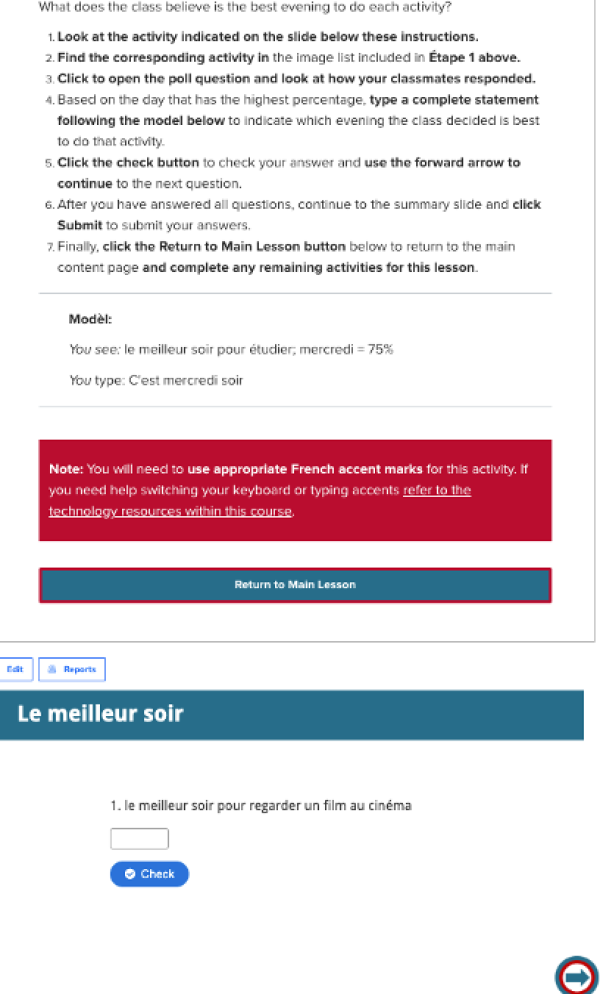One of the most common challenges facing asynchronous, online courses is ensuring opportunities for community building and human connection. In an online, asynchronous world language course that is taught entirely in the target language, such a challenge is heightened. In beginner-level courses, in particular, students have limited vocabulary and grammar in which to communicate, making some traditional, asynchronous peer interaction activities impractical.
To tackle this challenge, we needed to find ways to incorporate the UXDL principle of human design through connection, tapping into the social and emotional factors that are essential for learners to succeed. One such strategy to accomplish this was to incorporate ThingLink poll tags within several vocabulary and grammar exercises to provide a novel opportunity for students to hear from and learn about their classmates at various points throughout the semester.
These practice activities are generally split into two parts:
Part1: An input exercise where students practice acquiring new vocabulary terms by reading several statements or questions that contain these new words and demonstrating comprehension by responding to each via a list of limited poll options.
As soon as students submit their own response to a polling question, they immediately receive the aggregated responses from the rest of the class. This real-time response functionality within an asynchronous environment, allows students to visually see that others are present in the course and learning alongside them. In addition, students can then utilize these poll results to consider and discuss the majority opinion on various topics, how they themselves differ from their classmates, etc.
Fig. 1: Part 1 directions followed by an embedded ThingLink scene containing several clickable poll tags.
Fig. 2: An open ThingLink poll tag that has not yet been responded to containing a statement and list of possible responses
Fig. 3: An open ThingLink poll tag displaying real-time data after the learner clicks on their response.
Part 2: An output activity (usually focused on writing skills) that follows a communicative approach to language learning where learners discuss personal experiences and “authentic”, or real-life, situations. In this part of the activity, students must reflect on the responses displayed from the polling questions and use those responses to answer a number of questions or summarize differences and/or similarities between themselves and their peers.

The employment of these polling exercises cannot and are not meant to replicate the same type or depth of interaction that takes place in an activity such as a discussion board, but they provide an additional opportunity to instill a human element into an asynchronous environment. These types of activities provide both a reminder to learners that they are not alone in the learning process and they offer an entry point that can be used by the instructor to harness and build upon topics and ideas that are relevant and important to students in that given learning community.
